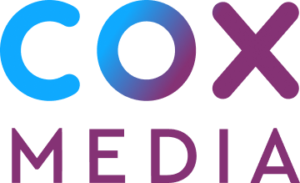The State of Streaming: Trends and Opportunities for Q3 2023
The second quarter of 2023 saw the streaming industry continue to adapt to an ever-changing competitive landscape. Ad-supported television, tiered subscription levels, legacy streaming rebrands and disruptive upstart services are all evidence of an industry-wide effort to stabilize business models and win the attention of today’s consumers.
Original hits like Freevee’s “Jury Duty” have demonstrated the potential for ad-supported services to break through and attract new audiences, while HBO’s decision to rebrand as MAX underscores the effort even leading streamers are making to position their services for better long-term viability.
These changes all have implications for small businesses eager to advertise across new and existing streaming inventories. Here’s a look back at what changed in Q2, and where we’re headed in Q3.
Ad-Supported Streaming is Growing Alongside Subscription-Based Streaming
Advertising-based video-on-demand (AVOD) services are currently seeing a surge in adoption and usage, but that consumer shift didn’t happen overnight. According to Comscore, AVOD services outpaced subscription-based services in growth over a two-year period between 2020 and 2022.
During that time, AVOD services saw a 29 percent increase in U.S. household adoption, compared to just 21 percent for subscription-based services. While the total number of subscription-based service adoptions was far greater than ad-supported alternatives, this growth laid a foundation for the current ad-supported boom sweeping the streaming landscape.
Today, AVOD is the fastest-growing streaming category on the market, adding 2.6 million subscribers in the most recent quarterly update. Free ad-supported television (FAST) services were close behind at 1.7 million new subscribers for the quarter. Meanwhile, subscription-based services lost a combined 2.2 million subscribers.
With consumers continuing to stack streaming services together—averaging 4.5 streaming services per household—today’s audiences seem focused on lowering their total subscription service costs. It’s possible that households will actually increase their total number of streaming services by adopting more free, ad-supported options that increase their entertainment options while reducing their monthly bill.
FAST Services Have Secured a Sizable Market Share
FAST services offer a streaming experience similar to the linear viewing experience of cable TV, creating a programming lineup that is streamed in real-time all throughout the day. The leaders in this category are steadily growing their market share and proving that consumers may be eager for more.
Both Tubi TV and the Roku Channel have secured more than one percent of the overall TV and streaming market share, according to a recent report from Nielsen’s The Gauge, while Pluto TV is close behind at 0.9 percent of the market share. Tubi alone owns a larger market share than Peacock and MAX. Together, the three FAST services have a combined market share that would rank as the fourth-largest streaming service, behind Hulu and ahead of Prime Video.
This size, combined with the market’s projected growth, suggests that FAST advertising opportunities will continue to expand in both quantity and quality.
Some Streamers Are Betting That Lower Ad Frequency Equals Higher-Quality Impressions
Ad load on streaming services impacts the size of available ad inventory, the cost of those media buy options, and the overall consumer experience. Streaming services must balance their desire to generate ad revenue with the need to avoid upsetting consumers with too many inserted ads.
Because of this, new ad-supported streamers are more likely to embrace a conservative approach to ad load, minimizing the amount of ads per hour to curry favor with their customers. The recently rebranded MAX streaming service, for example, offers the lowest ad load at just 1.6 minutes per hour. Netflix’s ad-supported streaming service is also on the low end, at just 3.3 minutes per hour.
But Netflix’s ad load is up 10 percent since its November 2022 launch, and further increases may be on the way. Meanwhile, other services are pushing the envelope: Hulu’s ad-supported service averages 7.3 minutes per hour, while Disney+ Basic has risen to 5.3 minutes per hour.
A higher ad load likely means lower prices for advertisers, but it comes with potential tradeoffs: a higher frequency of ads means that ad impressions may be less impactful, and the ads themselves may be viewed negatively—or ignored—by audiences.
By contrast, lower ad loads mean your ads will stand out, but the cost of this ad space will be set at a premium. Businesses will need to balance their ad budgets with the return on investment they see from these different ad platforms. Testing ad delivery across different platforms may help advertisers identify the highest-value opportunities.
The Quality of Streaming Ad Performance Metrics May Vary
While streaming platforms offer built-in analytics and measurement tools to understand advertisers’ return on ad spend (ROAS), different platforms account for this performance differently—and the data can be misleading.
Two different platforms may interpret the same ad performance in different ways, relying on data points and attribution models that inflate the perceived value of those ads. These performance reports can offer value, but businesses should take a skeptical approach and understand how to evaluate performance data on their own.
This is where a small business marketing consultant can help steer your campaigns toward higher returns. A digital advertising partner has the depth of knowledge required to evaluate campaign performance on its own, complementing platform analytics with their own attribution models and calculations to build a complete picture of your streaming ad ROI.
From planning streaming ad buys to developing creative and managing campaigns, Cox Media can help your business take advantage of new opportunities to promote and grow your business. Contact us today to learn more.
Connect with a Marketing Expert
Share Post On Social
Related Insights
Connect With Your Local Marketing Expert
You know your business. We know advertising. Together, we can bring your business to more people. Contact a member of our team today. We’d love to help you grow.


